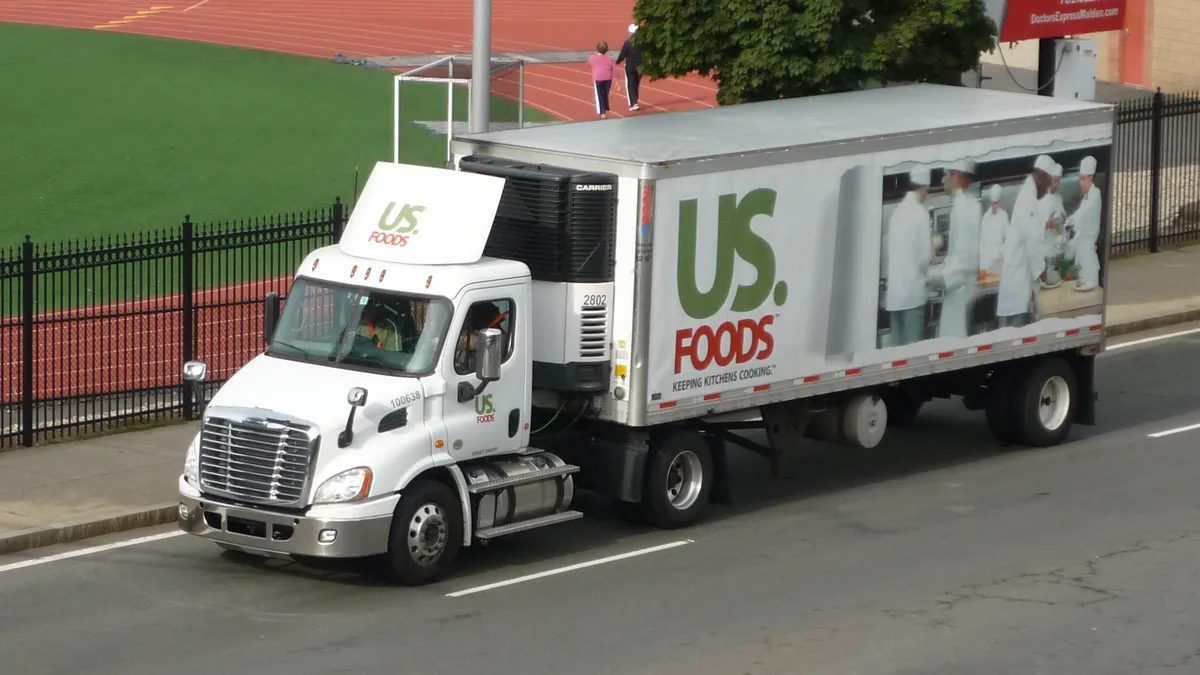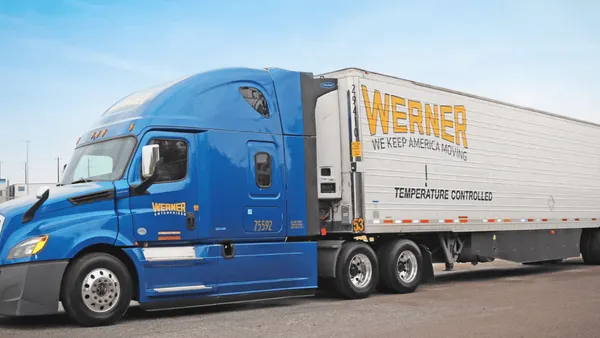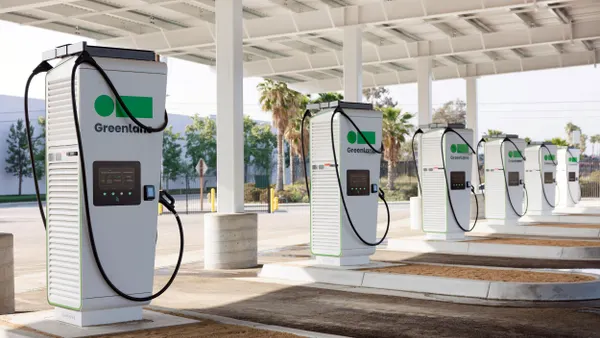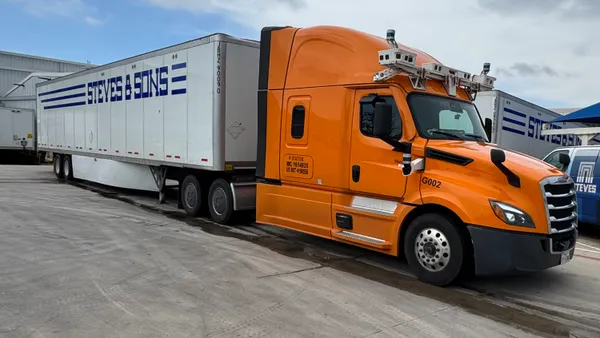Dive Brief:
- US Foods has launched the first phase of a delivery route optimization initiative as it adapts to changing customer order patterns, Chief Commercial Officer and interim CEO Andrew Iacobucci said on the company's Q1 earnings call.
- Phase one focuses on identifying wasted miles in its current routing system and, in the coming months, remapping routes so customers are routed to the most efficient distribution center by mileage and service, said Executive VP and Chief Supply Chain Officer Bill Hancock.
- In phase two, the company will work to replace its current system with dynamic routing technology, according to Iacobucci. The initiative has already led to a roughly 10% improvement in case volumes per mile in the company's leading markets compared to the same period in 2019, he said.
Dive Insight:
US Foods' routing technology upgrade will allow it "to offer dynamic delivery windows and real-time visibility to a customer," improving service and further reducing miles and cost, Hancock said on a February earnings call. The initiative comes as US Foods looks to maintain on-time delivery while grappling with a bounce back in demand and servicing new customers in new locations.
"As hospitality and health care improved from a macro recovery perspective and our expected new business is realized, combined with the accelerated restaurant case growth, we expect legacy volume to strengthen to 2019 levels later in this year," CFO Dirk Locascio said on last week's call.
Dynamic route optimization can help carriers keep operations efficient and consistent during volatile demand periods, with the added benefit of reducing emissions by cutting down on idling. The technology has proven useful for companies that have struggled with inconsistent load volumes and rates since the COVID-19 pandemic took hold.
“The difference between pre-[COVID-19] and current is that we are looking to utilize our tools to more dynamically route shipments and be more creative in how we plan versus some level of static routing,” Amos Rogan, LTL operations leader at Averitt Express, told Transport Dive in 2020.
Even as US Foods weeds out wasted miles, it will still need drivers to power its fleet of roughly 6,500 trucks. Hancock said the challenge of hiring Class A drivers "is not going away for anyone anytime soon," spurring the company to invest in its own training initiatives.
US Foods is offering to put applicants without a Class A license through driver training before hiring them, Hancock said. The company has also deployed a proof-of-delivery device for its current drivers to help onboard them faster and increase productivity, he added.












